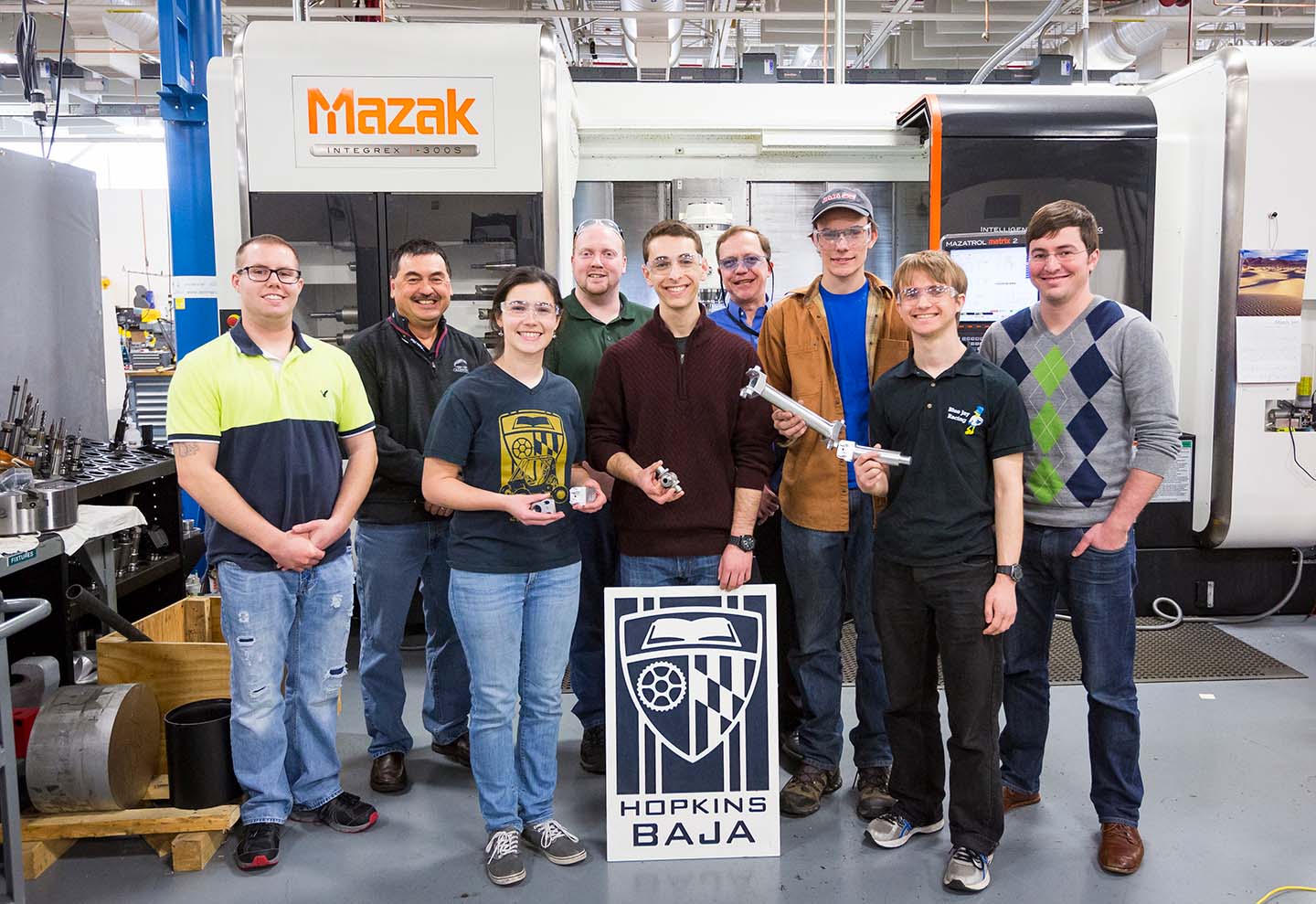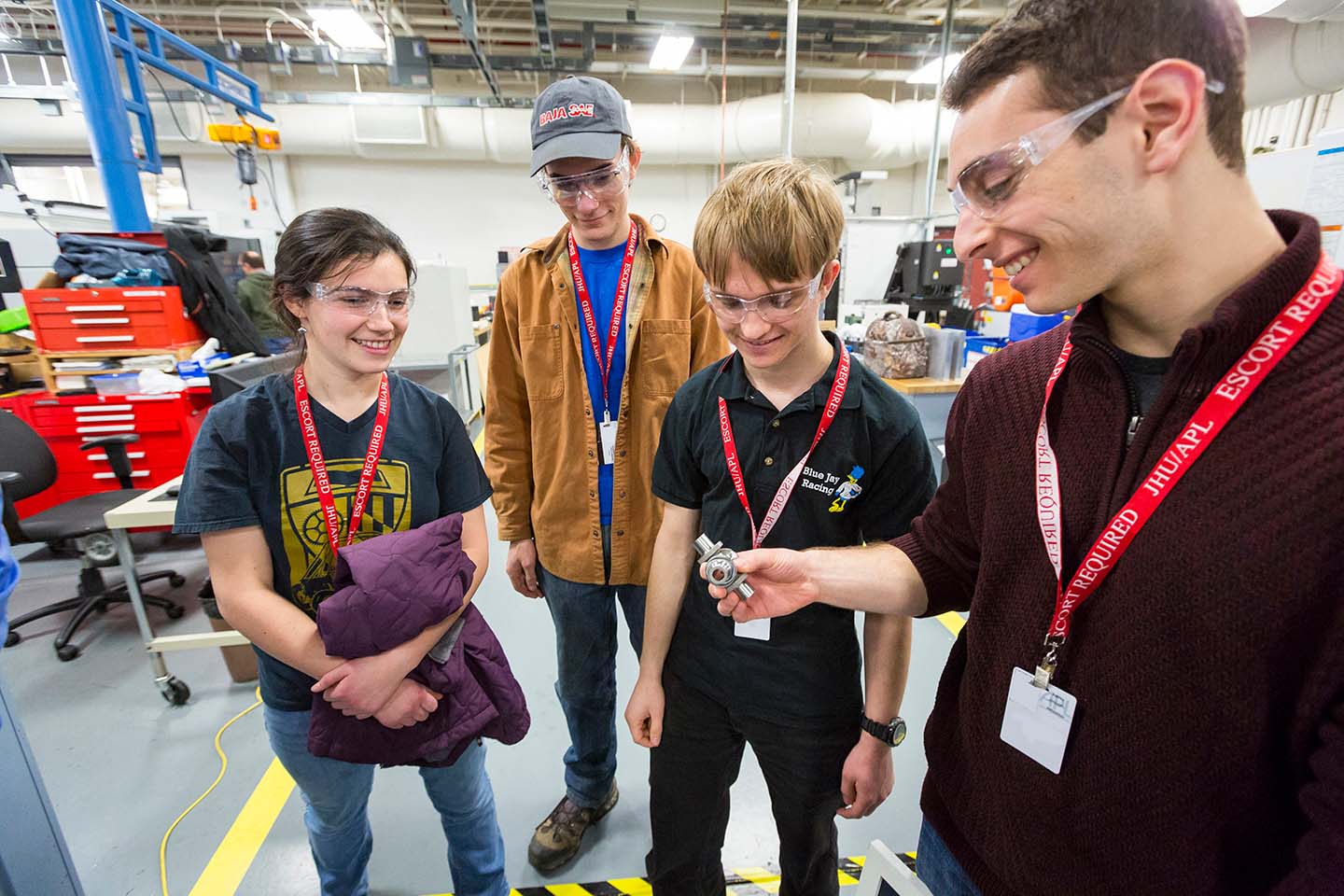Press Release
JHU Student Racing Team Gets a Boost from APL Additive Manufacturing
Wed, 04/12/2017 - 14:33
Justyna Surowiec
The Johns Hopkins University (JHU) Baja racing team had a problem.
The students were having a hard time making complex drive shafts, parts that connect the rear wheels to the engine, for the race car they were building for competitions.
The Baja SAE portion of SAE International’s Collegiate Design Series requires college students — typically engineering and mechanical engineering majors — to build an off-road vehicle that can take on challenging terrain, such as the locations of storied off-road races around Baja California, Mexico. The engine is the only part provided to the students; everything else is built from scratch. The competitions, and the work leading up to them, give engineering students real-world experience in designing and building a product.
But the Hopkins team wasn’t quite there yet. Low on funding (the team is supported by donations and their own wallets) for a complex and critical part, the team starting looking last summer for a commercial company that could make the drive shafts. While doing so, the students learned that the Applied Physics Laboratory (APL), a division of JHU located in Laurel, Maryland, specialized in quickly producing these kinds of complex parts in small batches, and they were directed to John Slotwinski, who heads up the Additive Manufacturing Section in the Research and Exploratory Development Department’s Advanced Mechanical Fabrication Group. As it happens, Slotwinski was on sabbatical at the Homewood campus and was open to collaborating with the students.
It took a few more months to work out the kinks and reestablish contact, but once the students articulated what they were looking for (and with funding support secured by REDD’s branch supervisor, Todd Ramsburg), APL jumped into the project and brought a seasoned approach to the effort.
Slotwinski and section colleagues Michael Presley and Zach Ulbig got to work this past February, crafting titanium portions of the drive shaft at the Lab’s Additive Manufacturing Center of Excellence. CJ Farrington, Joe Walters and Keith Bulkin of the Mechanical Fabrication Section planned the complex aluminum portions of the drive shaft, made entirely with conventional machining.
“We were happy to do it,” said Slotwinski, knowing that it would be difficult for the team to find a commercial vendor who could make the intricate parts. The Baja race team came up with the original design for the parts, but Slotwinski and Presley added their two cents where needed. “We tweaked the design where we felt it would be better to do things a certain way,” he said, and kept the resulting expectations realistic and on budget.
The parts that APL produced were lightweight and geometrically complex.
“By taking advantage of titanium and the excellent machining job done by the APL machine shop, we ended up with drive shafts that weigh just over 4.5 pounds on each side, roughly half the weight of the purchased parts they replaced,” said Geordan Gutow, a Whiting School of Engineering student and member of the racing team. “The weight savings will help our acceleration, improving our performance at competition. We also learned a lot about designing parts for additive manufacturing, since the capabilities and limitations are very different from conventional practices.”
Even Slotwinski was impressed with how everything worked out. “These are things that we would be really proud to show off,” he said. “We want to show sponsors that this is in our wheelhouse, this is what we can do with our facilities and equipment.”

